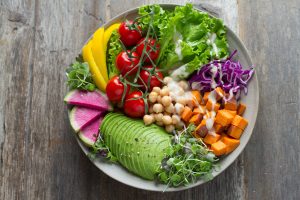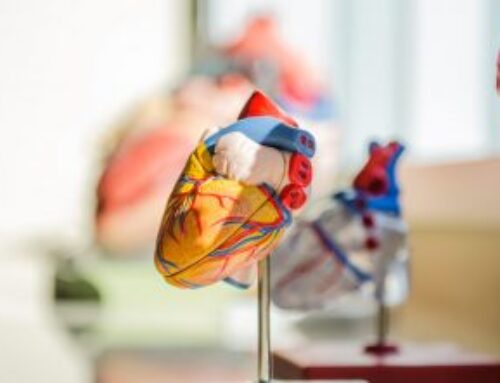The nutritional needs of the elderly are quite different from a youngster or even a typical middle-aged person.
For one thing, there are a ton of changes happening in your stomach. Add to that ongoing medication, poor dentition, weak bones, difficulty maintaining an active lifestyle – and things can take a toll on a person’s quality of life.
That’s why, in this post, we look at how aging affects a person’s dietary needs along with ways to combat the most common health concerns of old age. It is possible to age well, living a long, vibrant and vigorous life. Every small effort made on a daily basis counts and by following some of the following strategies you may overcome nutritional deficits and improve overall health.
How Does Aging Affect Your Dietary Needs?
Gastrointestinal Changes
With age, your gastrointestinal terrain can change a lot. For one thing, the amount of stomach acid secretions (which are essential for nutrition absorption) decreases. Approximately 20% of individuals experience decrease in stomach acid. On top of that, acid reflux and heartburn (commonly called GERD can further affect your digestion). A decrease in stomach acid results in poorer nutrient absorption. Taking
Age also affects the Peristaltic activities of the body. It refers to the relaxation and contraction of the colon, small intestine, esophageal muscles, and stomach. This movement is what controls nutrition absorption as well as food movement through the digestive tract.
Malnutrition & Vitamins Deficiencies
Sensory, physical, and digestive changes, over the years, can lead to myriad deficiencies. The stock of vitamin D, B12, magnesium, potassium, fats, fibre, and calcium can plummet but, with the right nutrient-rich diet and targeted supplementation, malnutrition can be managed or reversed.
Dentitions
Studies tell us that the elderly with impaired dentition tend to be deficient in folic acid, Vitamin C, carotene, and Vitamin A. Essentially, when teeth start to wear out, it becomes more difficult to chew. As a result food choices may become limited, thereby limiting the ability to ingest and digest certain nutrient-dense foods.
Physical & Perceptual Changes
With age, the sense of taste and smell may change. This can contribute to the elderly losing interest in a variety of healthy foods which were once appealing to their taste palette. On top of that, many older adults lead sedentary lifestyles, which can lead to muscle loss and weight gain. A variety of consistent daily movements can improve digestion and weight management, not to mention other key benefits such as maintaining brain function and improving mood. Simple movements such as walking to do errands, dancing to some fun tunes, strength training with weights, and gentle yoga all have benefits when incorporated into a daily routine.
What is the Importance of Healthy Eating as We Age?
A nutrient-dense diet is crucial at every stage of life but it becomes even more crucial during old age. People over 40 and above may experience an increase in pains, aches, and serious health conditions, such as –
- Hypertension and heart diseases. Both can become more common as you age due to the stiffening of blood vessels.
- Loss of bone density. Bones may get weaker and become more brittle. This can increase the odds of fractures.
- Slower metabolism is common with advancing age, often leading to weight gain.
- Problems like incontinence and difficulty emptying the bladder. This mostly happens due to the bladder losing its elasticity.
- Declining oral health
- A decline in cognitive and memory functions. In some individuals, the changes are minor. But, in extreme cases, it can cause total memory loss, dementia, and Alzheimer’s.
- Vision and hearing problems
Adopting a healthy, balanced, and nutrient-rich diet could offset many of these health problems. Though diet alone is not sufficient, it does play a huge role in living stronger and longer.
What is the Best Diet for Older Adults?
Focus on Including Fewer Calories
Slow metabolism is the commonest issue during old age. That’s why it’s important that you limit your caloric intake to avoid obesity and weight gain.
Consider any Current Medications and Present Health Condition
It’s good to seek the advice of nutrition coaches and trainers. However, since they are not doctors, it is better if they look into any possible health conditions and medications that the patient may be taking.
For example, it doesn’t make sense for a diabetic patient to consume extremely sugary fruits. Similarly, salty foods are discouraged for someone dealing with high blood pressure.
Talk to your doctor and see how certain medications may affect nutrient absorption and how certain foods may negatively interact with medications. Also, see if you’re on any cleanses such as a candida cleanse.
Go with Healthy Portions
Simply knowing which foods to consume is not enough. An ideal diet also takes into account the caloric needs based on the age of the person.
For example, to maintain a healthy 2,000 calories per day, dietary recommendations are to include at least two cups of fruits, 6 oz of grains, 5 oz of protein, a few cups of dairy, and around 3 cups of veggies.
Ensure Hydration At All Times
 According to Eric Bakker, the famous nutritionist – most medical emergencies during old age happen due to lack of hydration. That’s largely due to a decreased sense of thirst which often leads to severe hydration.
According to Eric Bakker, the famous nutritionist – most medical emergencies during old age happen due to lack of hydration. That’s largely due to a decreased sense of thirst which often leads to severe hydration.
Older individuals should pay special attention to their hydration levels. They should limit beverages like alcohol, fruit juices, and coffee and focus instead on drinking plain water or herbal teas. Water can be made more hydrating by adding electrolytes to it. Electrolytes help the body absorb water into the cells. Vegetables and fruits such as cranberries are high in fibre and electrolytes. Adding slices of cucumber, lemon or lime also gives your body what it needs to support cellular hydration. Hydration can also be improved by adding chia or flax seeds to the diet (such as in smoothies, baked goods, vegetable juices, etc.). Chia seeds in particular, not only provide fibre and many nutrients, they also absorb 10x their weight in water making them super hydration.
Fiber-Rich Foods
With advancing age, the gastrointestinal wall thickens, leading to fewer and slower contractions. This can slow down the rate of nutrient absorption as well as the rate at which food is expelled; often leading to constipation.
That’s why fibre-rich foods are recommended. They keep digestion active by encouraging quick movement of food through the tract. Fibrous foods also bring down the risk of cardiovascular diseases substantially.
Whole grain cereals, nuts, brown rice, pasta, whole grain bread, vegetables, and fruits are all great examples of fiber-rich foods. All of these options are great if you’re on a candida diet as well.
Consume Foods Rich in Magnesium, Calcium & Vitamin D
 Bones can start to get brittle with advancing age. They may also lose their density. The benefits of bone-building calcium come from the interaction between magnesium and calcium, not calcium alone. Studies have shown that magnesium is a requirement in order to deposit calcium in bone. Excess calcium can be toxic – it can lead to calcification. It is not recommended to consume high amounts of dairy in order to get calcium. As we age, many people lose the enzyme required to break down lactose (the sugar in milk). Many people are lactose intolerant due to the lack of this enzyme. Eating a diet that is rich in magnesium as well as calcium for strong bones is paramount. Leafy greens, broccoli, sardines, canned salmon with bones, seeds, nuts, fortified cereals and small amounts of dairy (if tolerated) are all excellent sources of calcium and magnesium.
Bones can start to get brittle with advancing age. They may also lose their density. The benefits of bone-building calcium come from the interaction between magnesium and calcium, not calcium alone. Studies have shown that magnesium is a requirement in order to deposit calcium in bone. Excess calcium can be toxic – it can lead to calcification. It is not recommended to consume high amounts of dairy in order to get calcium. As we age, many people lose the enzyme required to break down lactose (the sugar in milk). Many people are lactose intolerant due to the lack of this enzyme. Eating a diet that is rich in magnesium as well as calcium for strong bones is paramount. Leafy greens, broccoli, sardines, canned salmon with bones, seeds, nuts, fortified cereals and small amounts of dairy (if tolerated) are all excellent sources of calcium and magnesium.
Other than that, sunlight exposure also triggers the formation of vitamin D in the body. To get more vitamin D include food like fatty fish such as mackerel, salmon, and clean water fish in your diet. Salmon, sardines, mushrooms, cod liver oil, milk, milk substitutes, and fortified cereals are other good options. Supplementing with vitamin D may also be necessary to keep levels optimum. Consult with your doctor.
High In Omega-3 Fatty Acids Foods
Fatty acids are powerful against inflammation. Inflammation is the leading cause of arthritis, cancer, heart problems, macular degeneration, etc. You can find omega-3 fatty acids in flaxseeds, nuts, salmon, mackerel, tuna, sardines, nuts, and soybeans.
Bottom Line
Old age can indeed be a difficult period. But, if you can take care of just a few things, you can live just as healthily even during the later years of your life. It’s all about dedication, perseverance, and leading a balanced lifestyle.
Written by Lacey Batch
 Lacey Batch is a fitness trainer & an expert writer who provides useful and meaningful information on lifestyle, health & fitness. Her mission is to cut through the noise in the health & fitness industry & to empower people to create sustainable solutions for lasting health, happiness & confidence by providing them with some tips on different categories like exercise, weight loss, candida diet, healthy eating, candida cleanse & many more. Her vision is a world where daily acts of self-love and care are a regular part of life.
Lacey Batch is a fitness trainer & an expert writer who provides useful and meaningful information on lifestyle, health & fitness. Her mission is to cut through the noise in the health & fitness industry & to empower people to create sustainable solutions for lasting health, happiness & confidence by providing them with some tips on different categories like exercise, weight loss, candida diet, healthy eating, candida cleanse & many more. Her vision is a world where daily acts of self-love and care are a regular part of life.














